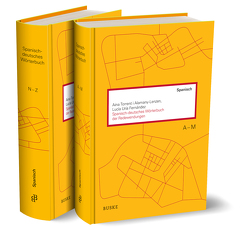Finnisch-Ugrische Mitteilungen Band 45
Cornelius Hasselblatt, Beata Wagner-Nagy
Abstracts
Originalia:
Elizaveta Kotorova (Zielona Góra / Tomsk) – Andrey Nefedov (Hamburg): Besonderheiten des Kommunikationsverhaltens der indigenen sibirischen Völker (am Beispiel des Ketischen)
The peculiarities of communicative behavior within the national culture are determined, on the one hand, by certain linguistic means, and on the other hand, by the rules defining how to use these means. In this article, we identify the following main features of speech behavior patterns implemented by speakers of indigenous languages of Siberia, in particular by the Ket language speakers: 1) Etiquettical speech behavior patterns are implemented in most cases not verbally, but actionally; 2) There are practically no native politeness formulas, instead of them arbitrarily formulated statements or borrowed etiquette clichés are used; 3) Informative speech behavior patterns can be implemented both verbally and actionally; 4) Such communicative and pragmatic factors as age, social status and social distance do not seem to affect the implementation of directive speech behavior patterns.
Miika Lehtinen (Oulu): Skolt Saami passive verbs
This paper deals with the Skolt Saami passive verb suffixes -j- and -õõvvâ- (e.g. mott-j-ed ‘change (intr.)’, rottš-õõvvâ-d ‘be pulled’) cognate with North Saami -o(j)- and -uvva- (e.g. dahkk-o-t ‘be done’, muhttaš-uvva-t ‘change (intr.)’) as well as Finnish -u- ~ -y- (e.g. käänt-y-ä ‘turn (intr)’). The research material has two complementary parts: a dialectal dictionary and a speech corpus. The semantics of the relevant verbs in the material is examined. The main distinction is made between intentional passives (true passives having a volitional agent) and automative passives (actions that happen spontaneously or by accident, anticausatives). The results show that at least the suffix -jed and to a lesser extent -õõvvâd are mainly used to mark automative passives, but some instances of intentional passives are also found as well as some cases that are ambiguous between the two. The suffix -õõvvâd is used in the passive function more rarely than the suffix -jed and it has more functions.
Sándor Maticsák (Debrecen): Die mordwinische Sammlung aus der Orenburg-Expedition von Pallas (1768–1774)
The 1769 transit of the Venus across the Sun was always an important astronomical event, because it made possible for astronomers to calculate the distance between the Sun and the Earth. 151 scientists and scholars travelled to 77 pre-selected spots around the world to observe the transit.
In 1768, the Imperial Academy of St. Petersburg organized five expeditions besides the Venus-observing teams to explore the flora, the fauna, the geological and the meteorological characteristics of far-off territories in Russia. The travellers obtained a large amount of information about the residents, customs, lifestyle and culture of these far-off lands, including some linguistic material as well. They wrote travelogues about their experiences.
The leader of the expedition was Peter Simon Pallas (1741–1811), the renowned Swedish natural scientist, and the subdivisions were led by German, Swedish and Russian scientists and scholars. Between 1768 and 1774, Pallas travelled around the Middle Volga Region, the Orenburg Region, Bashkortostan, Southwest Siberia and finally he reached as far as Buryatia. His travelogue was published in three volumes between 1771 and 1776 titled Reise durch verschiedene Provinzen des Russischen Reichs.
Pallas’s book contains linguistic material from several languages, Mordvin, Khanty, Mansi, Samoyedic, Mari and Udmurt included. Most of the words are animal and plant names and vocabulary related to clothing and religious beliefs. The Mordvin material is made up of 83 words. The first volume of the travelogue contains 34 of these, which are mostly names for pieces of clothing and medicinal herbs. The third volume contains a multi-lingual glossary, 49 Mordvin words (mostly from the basic vocabulary) included.
The present paper analyses these Mordvin words. Earlier literature studied only a few of them. The majority of the words occur for the first time ever in Pallas’s work.
Natalia Pimenova (Moskau): Prähistorische Kontakte der Eskimo-Aleutischen und austronesischen Sprachen: sprachliche Zeugnisse im „altaischen“ und „uralo-sibirischen“ Kontext
The Eskimo-Aleut languages are believed to represent a separate prehistoric migration of people from Asia. The more credible proposals on the external relations and prehistoric contacts of Eskimo-Aleut concern one or more of the language families of northern Eurasia. The two serious genetic hypotheses are ‘Altaic’ and ‘Uralo-Siberian’ or more inclusively ‘Nostratic’ (‘Eurasiatic’). With using a comparative analysis method, this paper provides data for connections between Eskimo-Aleut and Austronesian languages. The comparative word-list consists of comparisons of Proto-Eskimo (PE) or Proto-Eskimo-Aleut (PEA) and Proto-Austronesian (PAN) and Proto-Malayo-Polinesian (PMP) words put together by the author.
The material includes lexical entries that the author believes to be strong evidence for the Austronesian influence on Eskimo and Aleut languages. We can explain the lexical similarities as a result of a prehistoric substratum or convergence of proto-languages (contacts with peripheral prehistoric Austronesian subgroups).
Austronesian and alternate Uralo-Sibirian or Altaic etymologies of Eskimo words are discussed.
Sándor Szeverényi (Szeged): Tense in Nganasan narratives
The main objective of the study is to categorize the use of verb tenses in Nganasan personal narratives. The study is corpus-based, with texts found in the annotated Nganasan Spoken Language Corpus (Brykina et al. 2018). The motivation of the study is to describe the various and complicated system of TAME categories in Nganasan. The analysis proves that a relation of the use of past tense and perfective aorist and their role in the storytelling may be motivated by ethnosyntactic factors. An ethnosyntactic base can be detected behind the use of the aorist – but full-fledged proof of this requires further investigation, into notions such as the “value” of time in the Nganasan culture. It seems that in the use of the aorist the prominence of the present moment and real-time of life is reflected. Labov’s oral narrative structure description is applied to the Nganasan narratives as well. The research focuses on the relation of the beginning and the main parts, i.e. the Abstract/Orientation and Complicating Action. In Nganasan stories, we find sequences: typical beginnings and segments. These are well reflected in the tense of the foreground. A relevant part of the foreground can be the utterances of the characters that belong to the mainline. The two main strategies are the use of past tense and perfective aorist. It means that there are two basic story-telling temporal frames: perfective aorist and general past tense. The first one is more typical in the folklore genres. These two strategies can be combined with narrative/reportative evidentiality. Several aspects play a role in the “choice” of tense, one of the most important being the role of the speaker and their relationship to the story. This is well reflected, for example, between the introductory parts (Abstract and Orientation) and the dominant tense of the main story-line (Complicating action).
Sándor Szeverényi and Beáta Wagner-Nagy: Verbs of speaking in Nganasan: A corpus-based approach
The study aims at categorizing verbs of speaking and thinking in Nganasan. All verbs that can be associated with thinking and speaking are examined in the texts found in the annotated Nganasan Spoken Language Corpus (Brykina et al. 2018). The approach as a whole is rather formal and quantitative, primarily focusing on which verbs are involved in constructing report speech. It can be shown that in the Nganasan texts, several verbs express utterances, but according to their number of occurrences, munu- ‘say’ is the most common and most frequently used verb of speaking. According to the distribution in the corpus data, it seems that the overall number of verb-of-speaking is not high.















